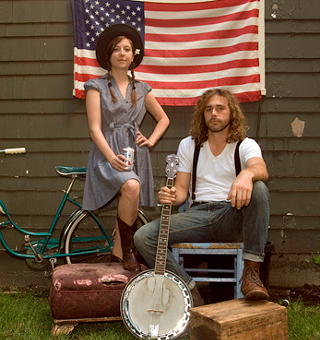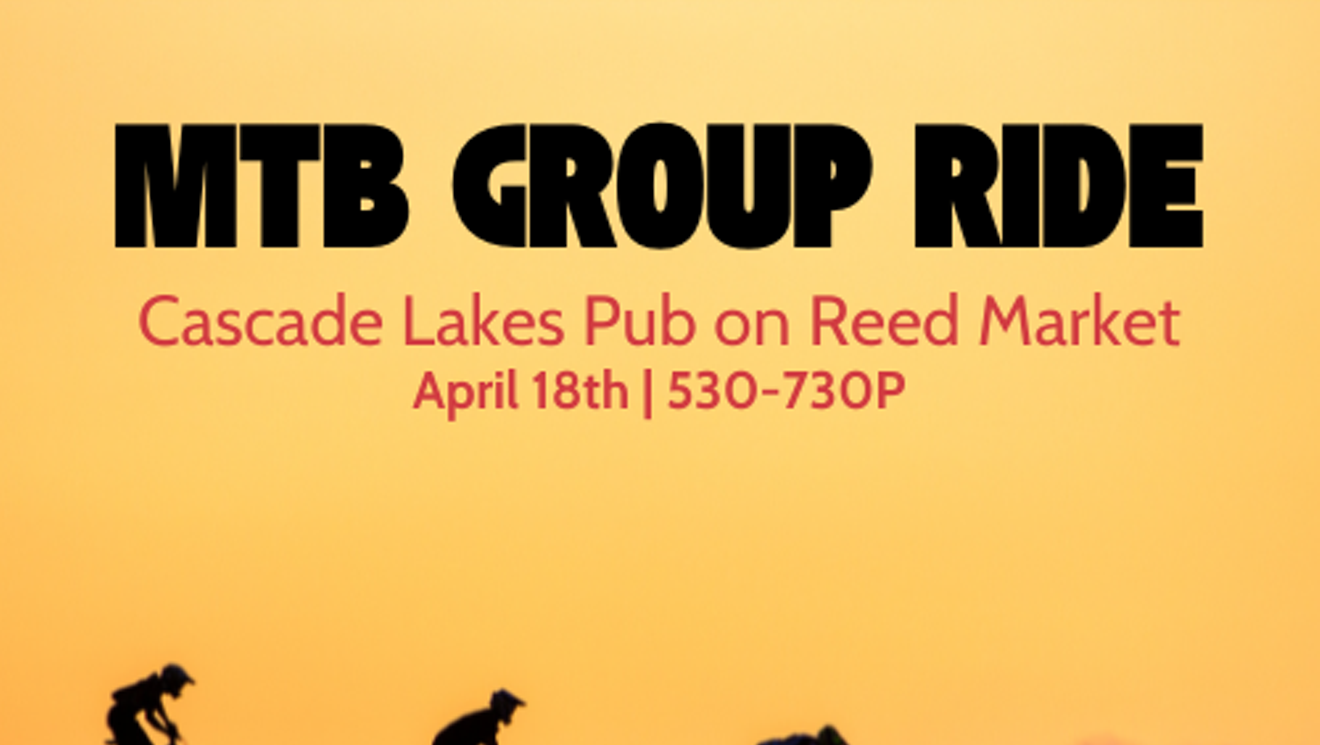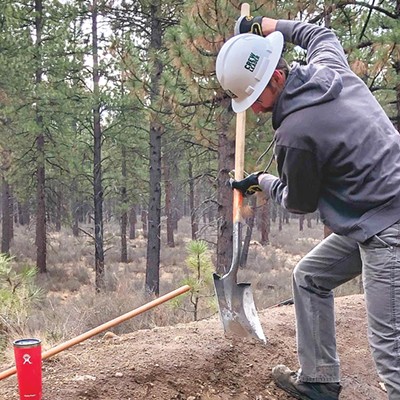More than any medium, music carries its sense of place. Or, at least that is how it once was. Say Liverpool, and what do you hear? See?
Or consider a few years later after the British Invasion, when the Grateful Dead, Jefferson Airplane and Janis Joplin delivered the Haight-Ashbury scene—and all of its flower power, hippie happiness and swirling psychedelics—from San Francisco to teenagers across the country. Or, 15 years later, and the Minneapolis post-punk sound (Replacements, Husker Du, Suburbs) carried the clang and fun-loving verve from that industrial river town to an entire generation. And, of course, Nirvana and Pearl Jam as the early '90s diplomats for flannel and Seattle slacker cool.
Trending now? Banjos!
Bands like Old Crow Medicine Show, The Avett Brothers and Mumford & Sons are selling like hotcakes. Once the music of the backwoods and off-beaten-path bluegrass summer festivals, so-called Americana has jumped both feet into the mainstream and splashes around every college dorm, and populates the Top 40. Along with this rejuvenation of old-time music—a re-envisioning of country and western, tumbled together with folk music, and all racing at the wicked pace of Pearl Jam guitar riffs—has come an idealized set of Southern iconography, firmly establishing itself front and center on pop culture's radar. Whiskey, rivers and horses. Front porches, coal trains and wagon wheels.
"Americana to me encompasses everything that's not mainstream country," says Morgan Jahnig, 34, who plays upright bass for Old Crow Medicine Show, a Nashville-based folk and bluegrass band famous for "Wagon Wheel," the most covered folk song of contemporary times. In May, the tune went platinum after Darius Rucker (former Hootie & the Blowfish frontman) made the song a top 40 hit.
The Americana trend is also remarkable because a decade ago, a betting man wouldn't have put good money on Nashville as the next "It" town. Around the turn of the century, that city and its music scene were producing regrettable and vacuous hick-pop stars like LeeAnn Rimes, Jessica Simpson and Billy Ray Cyrus (and daughter Miley Cyrus). But now that Tennessee town serves as the launching pad for some of the most reverential and earnest music. The Black Keys and Jack White call Music City home, as do more Americana acts than you can shake a poplar branch at. In 2007 a New York Times article boldly proclaimed, "the coolest music scene today is in Nashville."
And, just as other cities' music scenes have carried with them certain geo-specific styles and attitudes, so has Nashville's music scene delivered Americana to the mainstream hipster. Raw denim and cowboy boots are de rigueur attire from Brooklyn to Venice Beach; chicken coops and backyard gardens have their own glossy magazines, available at Whole Foods and Newport Avenue Market; and, southern staples like shrimp and grits, and chicken and waffles are as ubiquitous in Bend as in Nashville. Sure, it is a romanticized sweet-tea lifestyle, but it's one that is easy to get behind—a simpler time and place, dominated by idle afternoons on front porches, home-brewing and canning peaches in the warm Dixie sun. It is as American as the Fourth of July.
What is Americana, anyway?
Until 1995, Americana did not officially exist as a musical genre. Before that time, so-called alt-country or newgrass or folk served as ill-fitting descriptors for music that didn't fall into the contemporary country music genre, home to folks like Toby Keith and Shania Twain. As rhinestone-studded pop country had elbowed its way into Nashville in the '70s, '80s and '90s, and as country music drifted more towards L.A. than outlaw, staples like Johnny Cash, George Jones and Willie Nelson started to lose their turf. Meanwhile, new bands—traditional in that they used banjos and standup basses, but post-modern in that they borrowed equally from punk as from bluegrass—also emerged with no clear genre to house them.
But, in the mid-'90s, music writers and music producers in Nashville and San Francisco began painting this new sound with the broad strokes used to describe not just music but associated quasi-hillybilly culture and a romanticized Appalachian culture. More specifically, in 1995, the Americana Music Association was established as a place to gather and give voice to the growing number of varied Americana acts that, somewhat ironically, weren't fitting in traditional American music genres. Over the past 15 years, that Nashville-based nonprofit, which advocates for American roots music worldwide, has experienced tremendous growth. And what was an obscure musical genre has expanded to eclipse its subgenre forbearers, like alt-country.
At the most recent Grammy Awards, two of the three nominations for Best New Artists—The Alabama Shakes and The Lumineers—were prime examples of Americana music in the mainstream. Neither won, but Mumford & Sons, one of the most popular Americana bands today (ironically, a British band), did win a Grammy for Album of the Year. The album, Babel, which debuted at the top of Billboard's top 200, experienced a 200 percent jump in sales following the awards ceremony.
When it comes to instruments, Americana makes few distinctions. Acoustic instruments are the norm, but a full electric band is not uncommon. Interestingly, Americana music grew from the divergent sounds of the '90s— neither country nor rock-and-roll, Americana, at times, acts as an odd hybrid of rough-hewn grunge and alternative pop. In the early days, booking managers weren't sure what to do with such bands.
"We were some of the first bands to take it to the rock clubs," says Jahnig, explaining Old Crow Medicine Show's first tours in the early 2000s. "Over a decade, it became okay to play those places."
Americana, like rock and roll, borrows sounds greedily from other genres, and also captures the essence of myriad sounds: rock, blues, country, bluegrass, folk and punk. And it was born from the shortcomings of each. Just as early rock leaned on the blues, gospel and soul, Americana picks and plucks from traditional bluegrass. But horns and drums, common among Americana bands, would be too jazzy to qualify as strict bluegrass. Likewise, folk music wears its Birkenstocks too proudly for foot-stomping, and punk is too sneering for whistling on moonshine jugs, but Americana happily embraces all of those styles and sensibilities.
Yes, Americana is diverse; a true post-modern delicacy, including artists as varied as Wilco, Bonnie Raitt and Central Oregon's Larry and His Flask, which Bend's Boxcar Stringband frontman Joseph Balsamo describes as "a mix between Black Flag and a jug band."
The mutton-chopped singer-songwriter has been performing with his three-piece Americana band ever since 2007, roughly the time when Balsamo first saw the raucous North Carolinian folk rockers The Avett Brothers; he was inspired.
"I thought, 'These guys are doing something cool, something different,' " Balsamo remembers.
From Hollywood to Appalachia
How did this infusion of Americana happen? Two primary reasons: the 2000 film O Brother, Where Art Thou?, and first-on-the-scene Americana bands like Old Crow Medicine Show, a high-energy bluegrass band from Virginia's Shenandoah Valley. The band released its first album, O.C.M.S., in 2004, at a time when blinged-out hip-hop and Moby-inspired electronica were more the norm than washboards and banjos.
Now based in Nashville, the old-time band, which in 2012 released its fourth studio album, is enjoying the camaraderie that comes with living just a stone's throw from so many other talented Americana acts.
"Everyone has been trying to out do each other for so long," Jahnig says. "But all of these bands that are coming up right now—Shovels & Rope and The Lumineers—they really are some of the nicest and most collaborative musicians we've come across in a long time. That's one of the strongest things that's happening in music today."
This collaborative Americana explosion further sank the hook that the Coen brothers' 2000 movie had first set. The instant classic, set in the Deep South in the '30s, follows a well-intentioned escaped convict on his quest home to reclaim his wife and family. Set to memorable folk ballads, bluegrass tunes and gospel numbers, the film showcases Americana at its finest. (It didn't hurt to have George Clooney jawboning the whole film.) The soundtrack was so good and so well-received it topped not only Billboard's country charts, it also ranked No. 1 overall on Billboard's charts.
"That movie is a great example of the right place and the right time," agrees Jahnig. "People who knew 'Man of Constant Sorrow' and loved it, definitely helped us get our feet through the door."
A few years later, when the real estate bubble burst and the economy collapsed, the country was looking for "something to hold on to," as John Prine once sang. Americana, as a sound and an attitude, matched that desire to return to a simpler time—not to mention one more closely mirroring the stark economic realities than the complex (but often wordless) beats and loops of electronica. The extravagance and glitter of the go-go dot-com boom '90s and the flip-this-house '00s didn't resonate so well anymore.
With unemployment reaching double digits in many cities (all while executive pay continued to climb), it is no wonder many Americans turned to a genial, stripped-down sound. Just as Woodie Guthrie's music chronicled the Depression Era, Americana—music, sensibility and attitude—provides songs with an upbeat tempo, yet scribed with honest lyrics about hard times. Collaborative and approachable, the music is comforting and familiar. "Everybody has that grandpa or uncle who plays the fiddle," points out Jahnig.
"It's not a self-indulgent kind of music," Jahnig notes. "Sure, there's songs about drinking and partying and cocaine—and we play a lot of them—but a lot of the music talks about everyday problems."
Central Oregon's Larry and His Flask is a prime example of up-tempo, old-time music with modern messaging. Their song "My Name is Cancer" is a fast-paced remembrance. More broadly, that song is the third track on their 2012 album, Hobo's Lament, which, in itself, is something of a tribute—almost a glorification—of the modern-day drifter. Their latest album, By the Lamplight, released this year, contains the familiar drums and horns of LAHF's punk roots (punk is where the boys got their start) but also bluegrass banjos, as heard on the song "Home of the Slave," which is a general condemnation of the U.S. government and big business played at a ferocious pace. It is fun music that speaks to the times.
Balsamo agrees.
"It's interesting," the Boxcar Stringband singer muses. "It's taking something old and vintage and writing about something contemporary—like a Nintendo game." Balsamo says when he first came to Bend in the mid-2000s it seemed Central Oregon was all about jam bands and classic rock cover acts. Now, Americana is the dominant genre.
Silver Moon Brewing and McMenamins often book such music, and so did the recently closed The Horned Hand. Both venues provide a backdrop that complements harmonicas, plaid, peanuts and frothy pints. In many Central Oregon pockets, beards and mustaches have become more common than hair gel and a clean shave.
Jahnig, who is on a West Coast tour and already played sold-out shows in San Francisco, Portland and Seattle, observes Americana influence everywhere—from Nashville to the Northwest.
"We don't need our pre-creased acid- washed denim anymore," Jahnig points out, snubbing the stylized '80s culture he grew up on. "It's finding the beauty in the simple. Like the music itself, it's not a fussy culture. We don't require a lot of complexity."
Pop culture and porches
Southern, countrified cooking has followed the banjos and fiddles. A few of Portland's more popular restaurants have, for years, relied on the Americana surge. On weekend mornings, the lines for Screen Door's brunch stretch down East Burnside Blvd. In Northeast Portland, Podnah's Pit Barbecue produces some of the best pulled pork this side of the Mississippi River. And, The Delta Café, in Southeast, and its spinoff, Miss Delta, specialize in Cajun food (and PBR 40s served in a bucket of ice). Gravy, across the street from Miss Delta on North Mississippi Avenue, has a fanatical following and long lines for its calorie-dense breakfasts any morning of the week. Fried chicken and waffles and made-from-scratch biscuits and gravy (see page 45 for local options) are popping up on menus everywhere. Bend's Blue Pine has been selling out of its frog legs dish.
Similarly, Norman Rockwell-themed nostalgia also has been popping up on the home front. Few duties are more American than growing your own food. And while the urban farming craze seems to have peaked, with chicken coops and backyard gardens on seemingly every city block—in Bend and elsewhere—some are still catching up. Shoot, Jennifer Aniston just added chickens in her own "yard," which is behind her 8,500-square-foot Bel Air compound (she also grows vegetables).
Even TV shows and literature have picked up on the Americana trend. From "Swamplandia!" (see page 44) to the junkyard scourers on "American Pickers," old-timey and down-home is what people seem to crave. Perhaps it is Kardashian fatigue.
Americana music and culture may soon fade from the mainstream, usurped from its rocking chair by the next big thing, but it won't go away. It is too ingrained in the country's mythology, and now as deeply etched into the psyche of the Millennial Generation as Seattle's grunge was into Generation X.
"Americana gives people a chance to look back," Jahnig concludes. "And it gets a whole new generation to know who Sam McGee is."
























